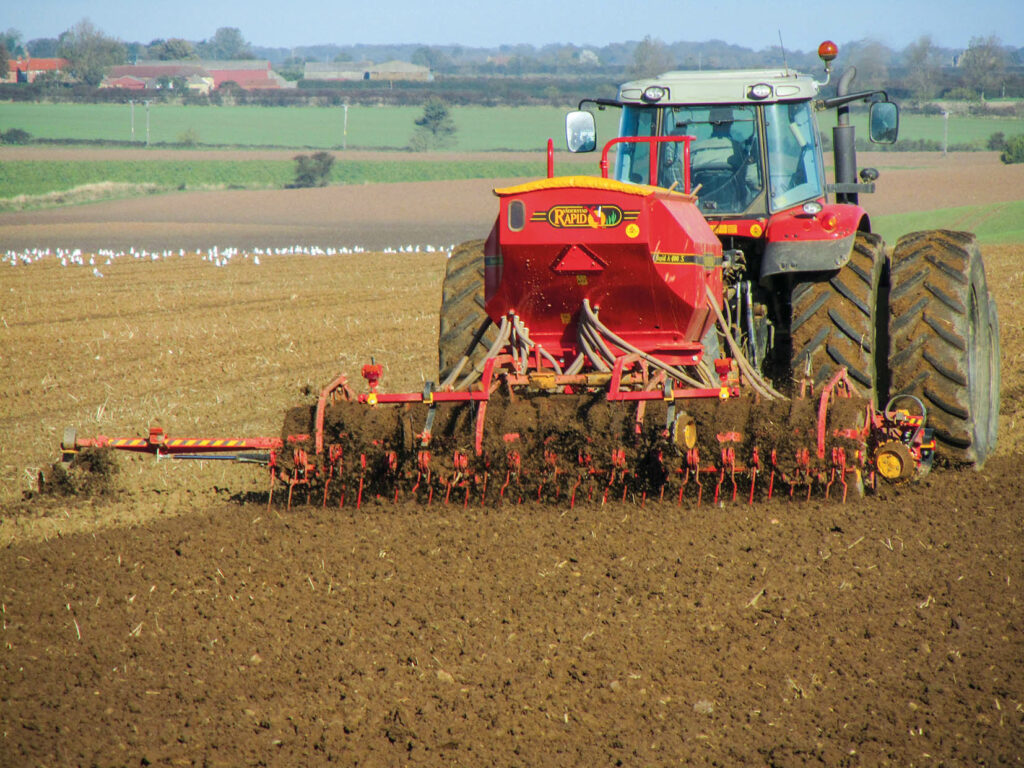Optimise late drilling wheat with the right variety choice
29th October 2022
In order to avoid unnecessary yield penalties when late drilling winter wheat, it is key to select the right winter wheat variety.
Late drilling presents a unique set of challenges to the wheat crop as soils are cooler and wetter, so proceed with care and consideration in order to get the crop well established, says Limagrain UK’s Ron Granger.
“Delayed or late drilling of winter wheat considered to be from mid-October onwards is now common practice – particularly for black-grass management, in a second wheat situation and for those who are drilling wheat after sugar beet or potatoes.
“Although most of the varieties on the AHDB Recommended List can be drilled late, it is important to make a distinction by choosing varieties that will cope well, rather than be challenged by the situation.
“Get it wrong, and you could be facing fairly substantial yield penalties – which are totally avoidable.
“Characteristics of wheats that suit this slot are strong tillering and vigorous, combined with good rooting attributes and a semi prostrate growth habit in the winter,” he explains.
“Crops drilled later will not have been in the ground as long as those drilled earlier in the autumn, so the chosen variety needs to be robust with a good tillering ability and quicker out of the blocks in the spring, once growing conditions are favourable.”
Competing with black grass
Mr Granger points out that this is especially important where there is black grass, as the variety needs to compete with the rapid growth of the black grass rather than sit and tiller flat to the ground where it will eventually be smothered.
For these reasons, Mr Granger recommends LG Skyscraper and the new variety in the Limagrain portfolio, LG Redwald, for the late drilling slot.
“We have seen very good results from LG Skyscraper both in trials and more importantly now on farm for several years, delivering high yield potential and a good consistency of performance.
“Data from several seasons of work also suggests that taller wheats, such as LG Skyscraper are at an advantage in the later drilling scenario as larger plant canopies also play an important role in keeping black-grass ear numbers and seed return to the minimum,” says Mr Granger.
“On this basis, LG Redwald suits this late drilling situation very well – it’s a bit of a beast in the fact that it has a semi erect plant type combined with a strong tillering ability and large biomass potential – it will definitely give black grass a run for its money!
“One of the single most important factors in getting a late drilled crop off to a good start is using the correct seed rate,” he says.
In good conditions in early November, the target should be a seed rate of 375-400 seeds/m2, increasing to 400–475 seeds/m2 at later drill dates, or in a black-grass or poor seedbed situation.
“However, seed rates after the end of October are difficult to quantify, specifically as they will be more determined by the seasonal weather and seedbed preparation at the time of drilling.
“To compensate for the impact on tillering, as a result of cooler temperatures and shorter days, seed rates need to be increased the later into the season the crop is drilled.
“However, some varieties differ. For example, LG Redwald appears to cope at lower seed rates due to its excellent tillering ability which it has inherited from its parent LG Sundance.
“Agronomically, LG Redwald looks very interesting and has performed very well in this situation and we will be doing more work this coming season.”
Lower input requirement
He notes that later drilled varieties often have the advantage of requiring lower inputs and may not require an earlier autumn herbicide.
“However, always use an effective seed treatment for either root disease or slug and insect control especially in known high-risk situations,” he says.
“Also look at varieties with a good disease resistance profile, certainly against mildew, as this can be problematic on some soil types in the late drilled situation.”
Mr Granger also advises monitoring crops for yellow rust if winter conditions are mild. “Monitor all crops diligently at the juvenile plant stage – even those that are listed as tolerant varieties.”
Panel
Spring or second wheats
“The right winter wheat varieties can be grown through to the end of January without significant yield penalties,” says Mr Granger. “However, after January, spring wheat varieties come into their own regarding yield performance – especially if black grass is the major threat on farm.
“Most wheats can be sown in a second wheat situation, but look for varieties that have been tested and performed in this position such as LG Skyscraper. In fact, we have seen many growers adopting the variety on farm just for its performance in this second wheat slot,” he adds.
With second wheats, the added pressure from high levels of take-all inoculum and eyespot are important considerations, he points out.
“Seed rates should be increased due to the fact it’s a second or continuous straw crop, to compensate for the inevitable tiller loss from disease such as take-all. However, over the last few seasons with mild winters, extreme temperatures and rain prior to harvest, eyespot and fusarium are also having an impact.”

